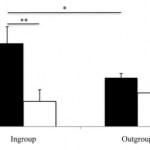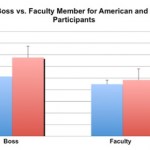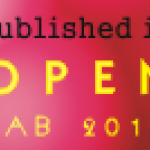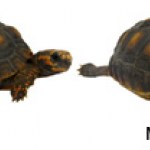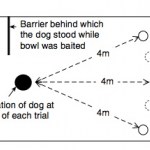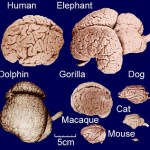Right in the middle, between the Trump-inspired March for Science, and the Trump-inspired People's Climate March, the New York times managed to come down firmly on the side of climate and science denial, in its editorial pages.
This week sees the first NYT installment by the ex Wall Street Journal columnist and author Bret Stephens (also former editor of the The Jerusalem Post). He is a professional contrarian, well known for his denial of the importance and reality of climate change, as well as other right wing positions. I assume the New York Times added Stephens to their stable of…
nyt
This week's think like a doctor column in the NYT is great. It asks the question, if a woman goes to a chiropractor, gets her neck manipulated, and within hours and for the succeeding four years she's had symptoms of severe headaches and a pulsatile sound in her ears, what is the diagnosis?
You can guess what mine is...
Quackery!
It's a great case because it comes with an excellent set of images and reports on this woman's case. But what I can't get over is that the most obvious problem here is that the woman was seeing a chiropractor. The most obvious conclusion of the piece is that this…
Human infants have one important job during the first years of life, and that is to learn about the world and their culture from their parents and other caregivers. But what is learning? I've previously written that Hungarian developmental psychologists Gergely and Csibra have defined learning as the acquisition of new, generalizable knowledge that can later be used within a new context. Further, they have posited that evolution has prepared humans to learn generalizable knowledge from their caregivers. They proposed an elegant hypothesis: that a specialized innate pedagogy mechanism - called…
What is learning?
Most psychologists (indeed, most people in general) would agree that learning is the acquisition of new knowledge, or new behaviors, or new skills. Hungarian psychologists Gergely and Csibra offer a deceptively simple description: "Learning involves acquiring new information and using it later when necessary." What this means is that learning requires the generalization of information to new situations - new people, objects, locations, or events. The problem is that any particular piece of information that a human or animal receives is situated within a particular context…
I've been a bit remiss in posting much this week, mostly because I had to prep a guest lecture (from which I just returned, and it was awesome thankyouverymuch) on the Domestication of Social Cognition.
In the meantime, now that spring is here, baby animals are starting to pop up all over the LA Zoo. I haven't managed to make it to the zoo yet to see them, but in the meantime, enjoy these pictures (click each one to enlarge) provided by the zoo itself.
This baby koala (not a bear! koalas are marsupials, like kangaroos) was actually born on July 6, but because koalas, like kangaroos, spend the…
You know that old phrase, "monkey see, monkey do"? Well, there might be something to it, except that chimpanzees aren't monkeys. (Sadly, "ape see, ape do" just doesn't have the same ring to it.) A new paper published today in PLoS ONE has found evidence that chimpanzees have contagious yawning - that is, they can "catch" yawns from watching other chimpanzees yawning - but (and here's the interesting part) only when the chimp that they're watching is a friend.
At first, scientists thought that contagious yawning was the result of a releasing mechanism - in other words, seeing someone yawn…
Welcome to the third installment of Animal Territoriality Week. See part 1 here, and part 2 here.
In 1994, a disease called sarcoptic mange swept through Bristol's fox population, severely crippling the population and killing most of the individuals. Professor Stephen Harris of the University of Bristol, who had been studying the movements and territories of those foxes, noticed that as the animals in one territory died, neighboring foxes were able to colonize the vacant areas in 3-4 days. He suspected that this was because the scent marks of the foxes remained active for 3-4 days, but didn'…
Welcome to Territoriality Week! Every day this week, I'll have a post about some aspect of animal or human territoriality. How do animals mark and control their territories? What determines the size or shape of an animal's territory? What can an animal's territory tell us about neuroanatomy? Today, I begin by asking two questions: first, what is the functional purpose of establishing territories? Second, to what extent can we apply findings from research on animal territorial behavior to understanding human territorial behavior?
It seems that everyone becomes an amateur animal behaviorist…
There is a small bit of land, only about a square kilometer, that has added a new wrinkle to the story of animal domestication. This bit of land located in Northern Jordan, just southeast of the Sea of Galilee near the banks of the Jordan River, is home to an archaeological site known as 'Uyun al-Hammam. One key feature of this site, excavated in 2005, is a burial ground containing the remains of at least eleven humans in eight different gravesites. The early humans were buried here sometime during the pre-Natufian period, or around 16,500 years ago.
Layout of the 'Uyun al-Hammam site, and…
"At home, a young man should be dutiful towards his parents; going outside, he should be respectful towards his elders." -Confucius (Chinese philosopher, 551-479 BCE)
"Your real boss is the one who walks under your hat." -Napoleon Hill (American author, 1883-1970)
Those two quotations reflect a cultural difference in how people construct their own conceptions of who they are and how they interact with others. That the particular culture an individual is raised in helps to determine the way they understand the self is clear. Western cultures, such as in America or the UK, tend to focus on…
Most dog owners think that their dogs can tell what they're thinking. Or at least, in some sense, they will insist that their pet pooches can sense their emotions, and respond accordingly.
Indeed, a man by the name of Karl Krall (say that three times fast) thought that there exist some sort of psychic connections between man and animal. And he thought he could prove it.
In this telepathy experiment between human and dog Karl Krall (on the right) tried to detect the thinking radiation he assumed to flow between the two. Krall was a rich dealer in diamonds who had founded his very own…
It's here! After more than a month of reviewing, I am pleased to announce the list of posts that will be included in this year's edition - the fifth - of The Open Laboratory!
In no particular order:
Givin' props to hybrids by DeLene Beeland
The decade the clones came: Beware the mighty Marmokrebs! by Zen Faulkes
Can seabirds overfish a resource? The case of cormorants in Estonia by Hannah Waters
The Data Speak by Andrew Thaler
Testing the flotation dynamics and swimming abilities of giraffes by way of computational analysis by Darren Naish
Shark week! by EcoPhysioMichelle
Size really does…
Sometimes, when trolling through your institution's journal subscriptions online, you wander into a treasure trove. I happened upon such a treasure trove recently: the Journal of Animal Behavior, which was published for just six years, between 1911 and 1916.
The studies described in this journal were being conducted at a time when experimental psychology was just emerging as a serious scientific discipline. In 1881, for example, Wilhelm Wundt organized the first scientific journal devoted to psychological science. The first laboratory for experimental psychology was established at Yale…
Have you ever been at a party with lots of people chatting away, when for some unexplainable reason you felt compelled to turn and look at the front door of your friend's house...and just as you were looking, someone was just coming in from outside and closing the door? You couldn't have heard the door open since there was so much noise already inside - more likely you noticed that other people were looking at the front door. All of this probably happened without any explicit intention or awareness. If several others are all directing their attention at a specific point in space, there might…
This week marked the release of Brian Switek's (blog, twitter) first book, Written in Stone. I got my hands on a review copy a few weeks ago, and I have nothing but good things to say about it. (Disclaimer: I was provided with a free review copy of the book, without any expectation that I'd review it on my blog or elsewhere.)
Written in Stone is a highly-accessible, engaging book which takes the reader simultaneously through the story of vertebrate evolution and the story of the scientists who - quite literally - uncovered it. The book's main success might be in its seamless transition back…
Does Fido see the cup as half full? Is your dog pessimistic? Last time we saw headlines like these they were about a certain barnyard animal. Remember "Pampered pigs 'feel optimistic'"? I didn't like it then, and I don't like it now.
Roughly half of the population of dogs in the UK are likely to - at some point in their lives - exhibit "undesirable separation-related behavior (SRB)." These are things that sometimes happen when left alone, like barking, chewing up or otherwise destroying objects, and urinating (or worse!) inside the house. While some owners view these behaviors as fine and…
I showed this video today as an intro to my 8-week "mini-course" on Canine Cognition.
In it, narrator John Lithgow presents two slightly different versions of the dog domestication story. The first version is essentially the Belyaev story: young wolves would be adopted into the camps of early humans. Only those who were most tame would breed with eachother, and over many generations, the domestic dog would emerge. The second is the version in which wolves "chose" to be domesticated - they noticed a lot of tasty trash around human encampments, and if they were unafraid enough to hang around,…
The National Institutes of Health announced that by 2011 it will transfer almost two hundred chimpanzees from the Alamogordo Primate Facility in New Mexico to a lab in San Antonio, Texas, lab for use in invasive research. In 1995, the NIH announced a moratorium on the breeding of chimps in federally-supported labs, and as a result, scientists have developed alternative ways to investigate diseases. But there are still viruses, such as hepatitis C and HIV, that other species simply can't contract. This fact, some argue, makes it prudent to subject chimps to this sort of biomedical testing.…
Your humble narrator finds himself sick with a cold, so here's a post from the archives.
There is considerable research on how children interact with other children and with adults, and how child development can be influenced by those interactions. But research on children's interactions with non-human animals seem to be limited. Given how ubiquitous pets are in the homes of children (at least, in WEIRD cultures), it is somewhat surprising that there hasn't been more work on the way pet ownership might affect child development.
According to the US Humane Society:
There are approximately 77…
The time is upon us. As I wrote about earlier this week, it is Social Media Week in Los Angeles, and I'm participating, liveblogging (on this post! refresh for updates below the fold), and livetweeting, and streaming a session at USC called Biomimcry: Science and Social Media.
An incomplete list of additional participants (who may or may not be livetweeting and/or blogging):
Marc Cooper: @marc_cooper
Laura Nelson: @laura_nelson
Jessika Walsten: @JessikaWalsten
Lisa Rau: @LisaRau, Square Syndrome
Krishna Nayak: @krishusc
Raphael Rosen: @raphaelrosen22, Science Happenings
Casey Rentz: @…



